
Hanjun Lee SB ’24
Course 7 ● Post-MIT: PhD student, Harvard Medical School
The thought of applying to MIT had never occurred to me until I had the privilege of representing South Korea at the 49th International Chemistry Olympiad. There, I heard so many different stories from people with so many different backgrounds, all converging towards the same enthusiasm towards science. I thought Biology was all about rote memorization, and I was planning to be a course 5 student. But 7.03 Genetics single-handedly shifted my major from Chemistry to Biology. I really appreciate how much effort MIT professors really put into their teaching. Course 7 is about understanding the mechanisms and logic of evolution, finding the right problem to better the lives of others, and being creative and collaborative to solve that problem.
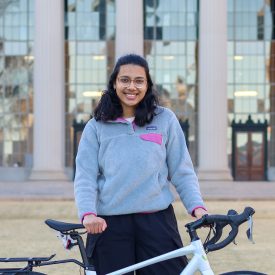
Amulya Aluru SB ’23, MEng ’24
Course 6-7 ● Post-MIT: PhD student, University of California at Berkeley
Arriving at MIT, I was surprised by how close and connected the student body is. Everyone is amazingly down-to-earth and passionate about both their academic and extracurricular pursuits. I’ve worked in the Page Lab as a UROP and then, after graduating, as an MEng student. My master’s project studied sex differences in human height using statistical genetics. My MIT experience and the mentors I have met here have shaped my research, teaching, and career interests. Don’t be afraid to talk to your professors, TAs, and advisors! My work with Dr. Page started because I reached out to one of my 7.03 Genetics TAs about her research.

Caroline Bao SB ’23
Course 6-7 ● Post-MIT: MIT Course 6 Masters of Engineering
A really strong advantage of being here is that all the faculty are willing to mentor students. I worked in the Feng lab at the McGovern Institute looking at a mutation associated with autism. Then I wanted to work on something more closely tied to my majors in Computer Science and Biology, so I’m currently working in the Jain lab looking at repeat expansion disease cell line models. After graduating, I’ll be staying in the Jain lab and pursuing a Course 6 Masters of Engineering, and I’m planning on applying to medical school.
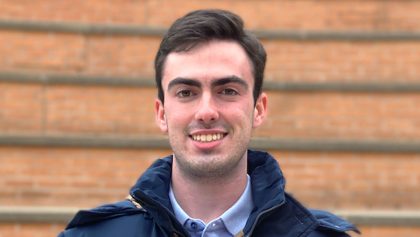
Eduardo Canto SB ’22
Course 7 ● Post-MIT: MD Student, Creighton University School of Medicine
As a kid, I got involved in science however I could, from joining the math team to starting a vegetable garden. Now, in the Calo lab, I’m studying a condition called Treacher Collins syndrome that causes facial deformities. After I graduate, I’d like to take my interest in human health one step further by attending medical school. Helping people is super important to me, and becoming a doctor will let me help people while studying fascinating aspects of human physiology.

Rachel Shen SB ’22
Course 7 ● Post-MIT: Research Associate, Mozza Foods
Coming to MIT, I knew I wanted to do something with biology and the environment. Studying the marine bacterium Prochlorococcus in the Chisholm lab has helped me understand how one organism’s cellular-level processes can affect entire ecosystems. I’ve been able to apply what I’ve learned at MIT Biology to projects in biotechnology and bioremediation; it’s really important to me that my research has applications that are directly relevant to people and the world around us.
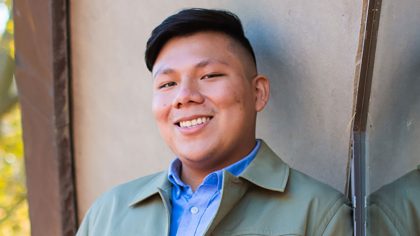
Jose Alberto Aceves-Salvador SB ’21
Course 7 ● Post-MIT: PhD student, Harvard Medical School
The beauty of a Course 7 degree is the flexible curriculum, which encouraged me to explore different aspects of biology — from infectious diseases to chemical biology. I was also able to take classes in other departments. These experiences allowed me to see biology from a different lens, showed me new perspectives on problem solving, and ignited my interest in interdisciplinary projects. The faculty and the support network of the Education Office make MIT Biology amazing.
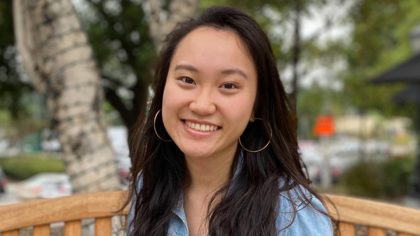
Ayesha Ng SB ’21
Course 7, 9 double major ● Post-MIT: MD student, David Geffen School of Medicine at UCLA
MIT Biology faculty value their undergraduate students’ opinions and ideas. In lab, I’m encouraged to play an active part in scientific discussions. During class, I’m taught to think critically and apply problem-solving skills to analyze data. At the Biology Undergraduate Research Symposium, I learned to effectively communicate my research findings. I hope to pursue a career as a surgeon, and the inquisitive, hands-on skills I’ve gained at MIT Biology will undoubtedly help in approaching complex patient cases.
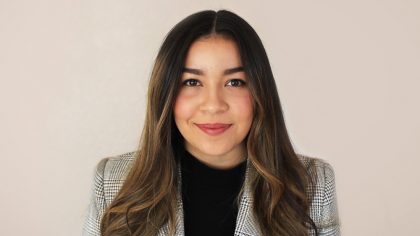
Emily O’Rourke SB ’21
Course 7 ● Post-MIT: PhD student, Perelman School of Medicine at the University of Pennsylvania
My experience in the Lamason lab studying pathogen spread convinced me that I wanted to major in biology. I got to see how biology worked on a practical level, and experience a hands-on connection by running DNA on a gel and doing other experiments. During lab meetings, it’s exciting to witness scientific stories as they unfold. I’m beginning to understand how my fundamental biological research may eventually have far-reaching impacts on disease evolution and spread.
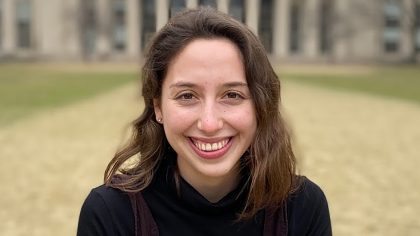
Maddy Kline SB ’20
Course 5-7 ● Post-MIT: MD-PhD student, Harvard Medical School
MIT prepared me to think about problems and, more importantly, let me know what I still need to learn. This pandemic has exposed so many breaks in our system like the disparity of infection rates between racial communities. I am eager to use the skills MIT has taught me and start my MD-PhD training so that I can play a part in preventing and responding to future health crises.

Leah McKinney SB ’20
Course 7 ● Post-MIT: PhD student, University of Wisconsin–Madison
Biology classes have a reputation for being memorization-heavy, but MIT Bio’s approach is all about taking the information you’ve learned and using it to solve interesting problems — which I find incredibly enjoyable. I’ve also had the opportunity for hands-on practice; joining the Grossman lab was the best decision I’ve made. I’ve learned different lab techniques, how to plan and troubleshoot experiments, and so much about bacterial DNA replication that wasn’t covered in my classes. It’s a great place to come each day. If I could, I’d spend all my time there.

Muskaan Aggarwal SB ’20
Course 7 ● Post-MIT: MD-PhD student, Perelman School of Medicine at the University of Pennsylvania
MIT Biology fosters a creative mindset, providing us with tools and knowledge to think about biological problems, but leaving it up to us to apply what we’ve learned. This is reflected in every facet of the undergraduate experience, from classes to research opportunities. I’ve worked in the same lab since my freshman fall, and I love how — in every class I take — something ties back to my research. By directing me to think about problems in this unique way, MIT Biology has prepared me for a career as a physician-scientist.
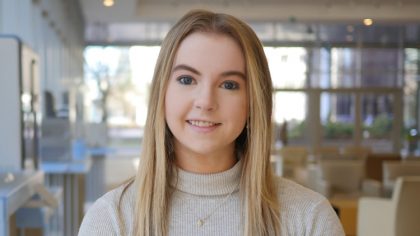
Anna Sappington SB ’19
Course 6-7 ● Post-MIT: MS student, University College London
I chose a joint major in computer science and molecular biology because I love extracting meaning from data and bringing the results to life. While some required classes meld the two disciplines, most offer training in each separately. That approach really appealed to me because I was hoping to develop both skill sets independently. I wanted to learn to write algorithms that could be applied to any field, and I also love understanding the biological mechanisms behind different diseases and viruses. I also learn outside of class from my peers, who have taught me new topics like machine learning, which is very applicable to my work.
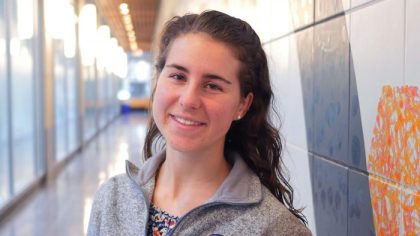
Julia Ginder SB ’19
Course 5-7 ● Post-MIT: Associate Consultant, Bain & Company
Although I initially intended to pursue a joint major in chemical engineering and history, my goals evolved, and I ultimately decided to focus on medicine, leadership, and policy. I found MIT Biology my junior year, and the department worked with me to come up with a plan tying my interests together. I am very thankful for the advising I have received — I can look to my professors for guidance because they care about me as a person outside of my biology courses. My advice to prospective students: You don’t need to know exactly what you want to do. If there are several areas of interest to you, MIT Biology will help you find a way to explore them!

Meena Chakraborty SB ’19
Course 6-7 ● Post-MIT: MPhil student, University of Cambridge
I’ve always had a dual-interest in the sciences and humanities, which I’ve cultivated at MIT as a 6-7 (Computer Science and Molecular Biology) major with a concentration in Philosophy. I’ve also always enjoyed writing. The scientific communications portion of the curriculum has helped me explain my work more clearly, and I’ve honed this skill as part of Phil Sharp’s lab studying miRNAs. Looking back, my communications classes have definitely made me both a better writer and a better scientist.

Camilo Espinosa SB ’18
5-7, 18 double major ● Post-MIT: MPhil student, Cancer Research UK Cambridge Institute
Growing up in Columbia, I equated MIT with the joy of learning I had cultivated all throughout high school. I love finding out how the world works, not only as a biologist but also through the social sciences. MIT allowed me to explore all these interests; every semester I chose my classes based on what I thought was interesting — not because I had to, but because I wanted to. I came here because I thought MIT would foster that kind of interdisciplinary learning, and it has.
